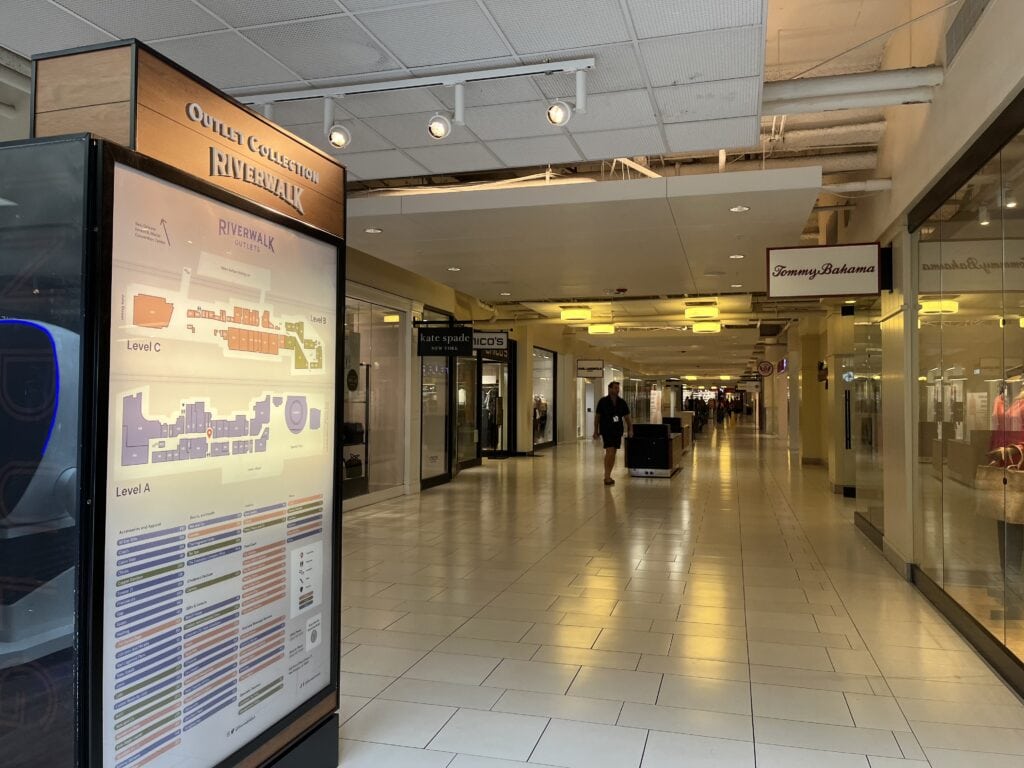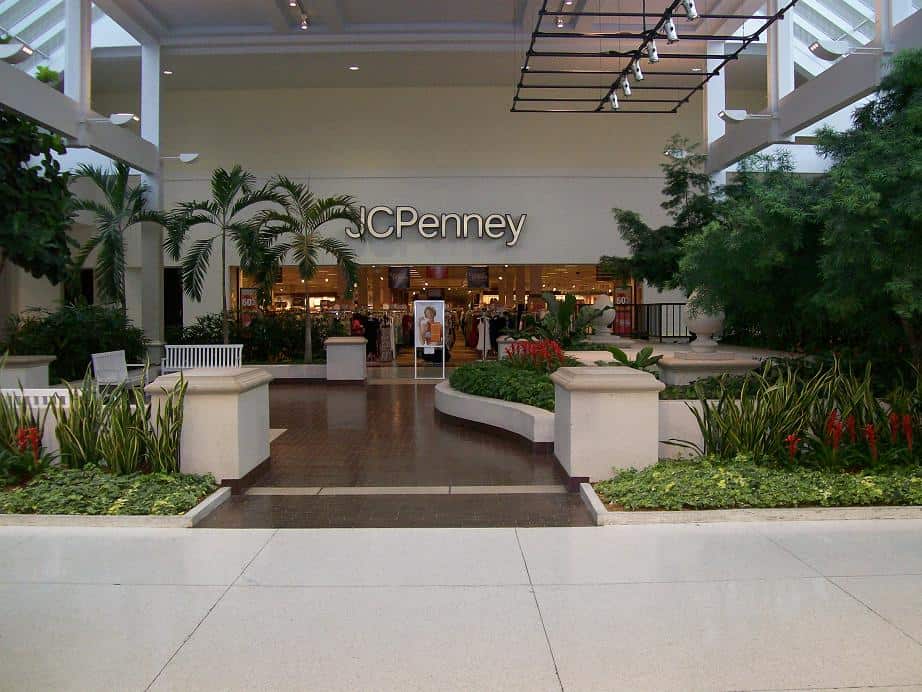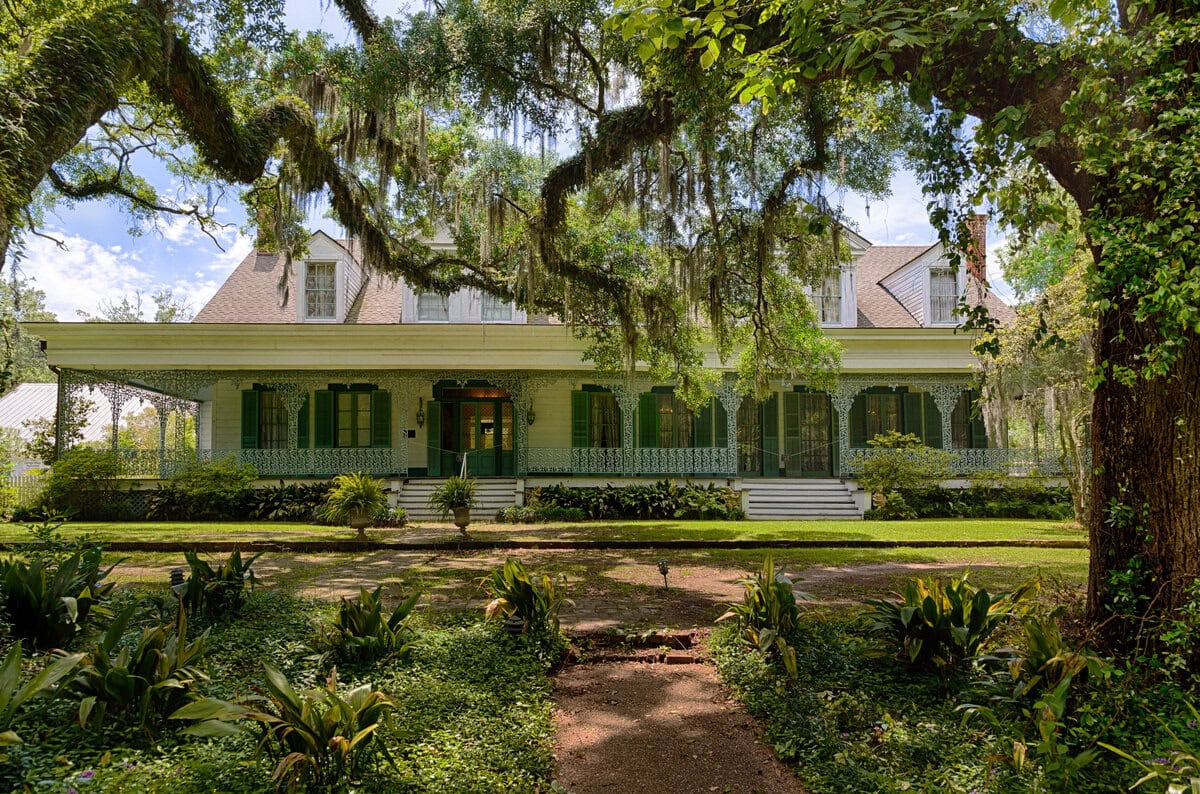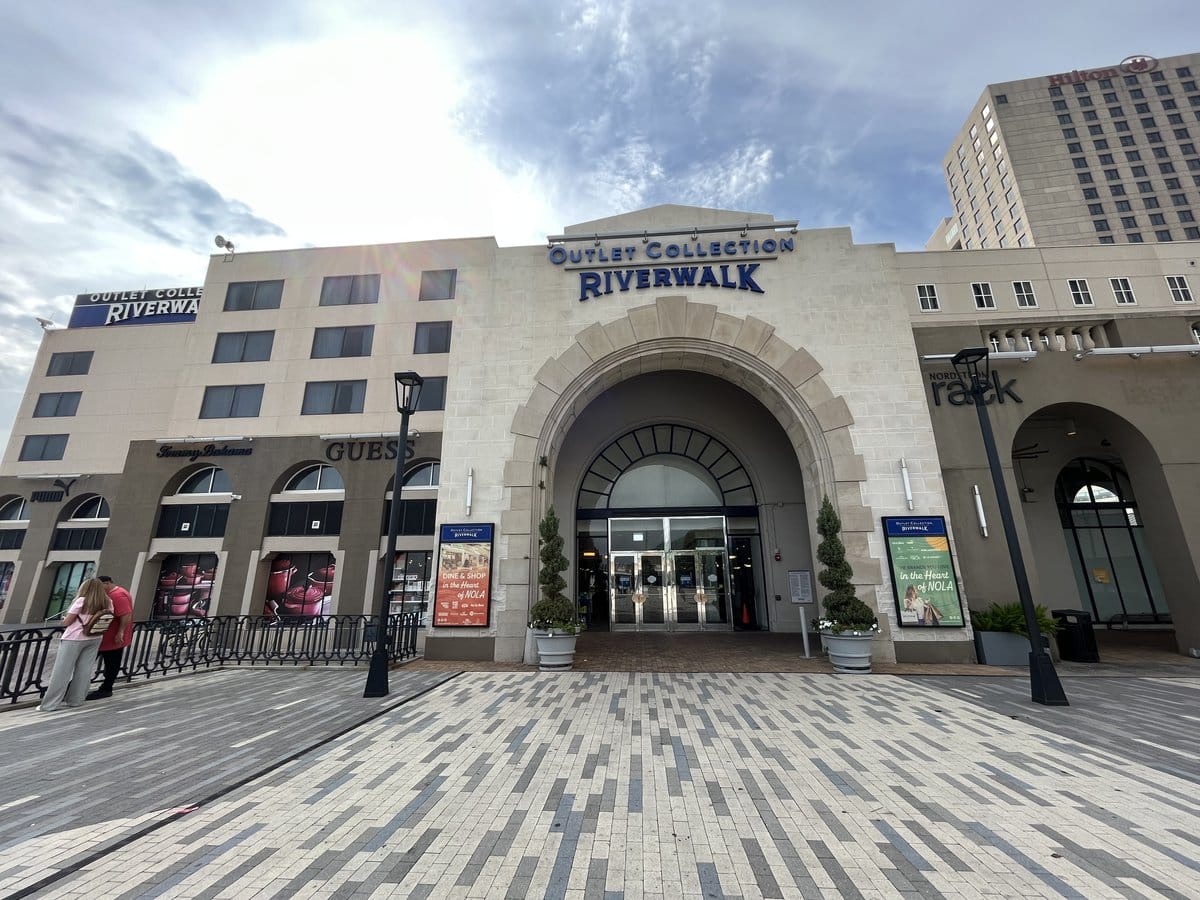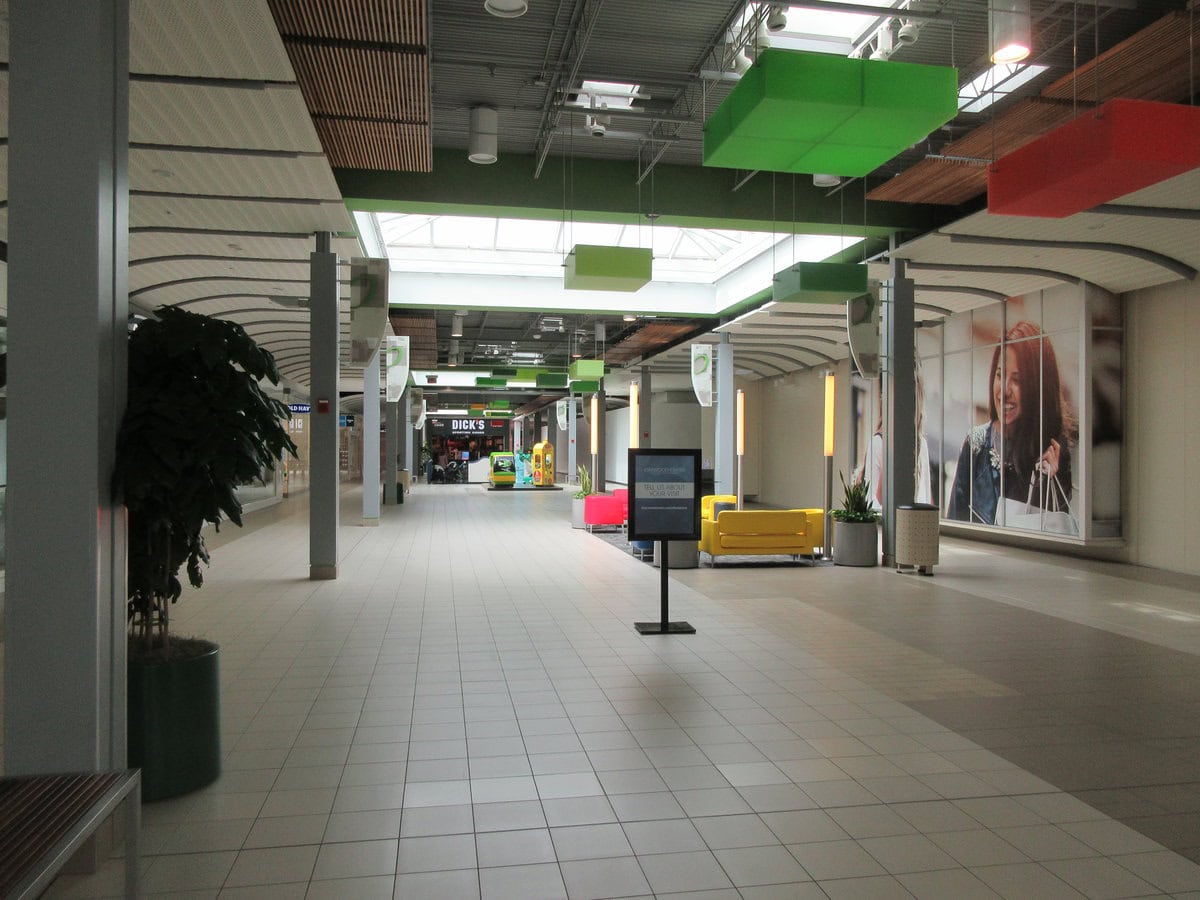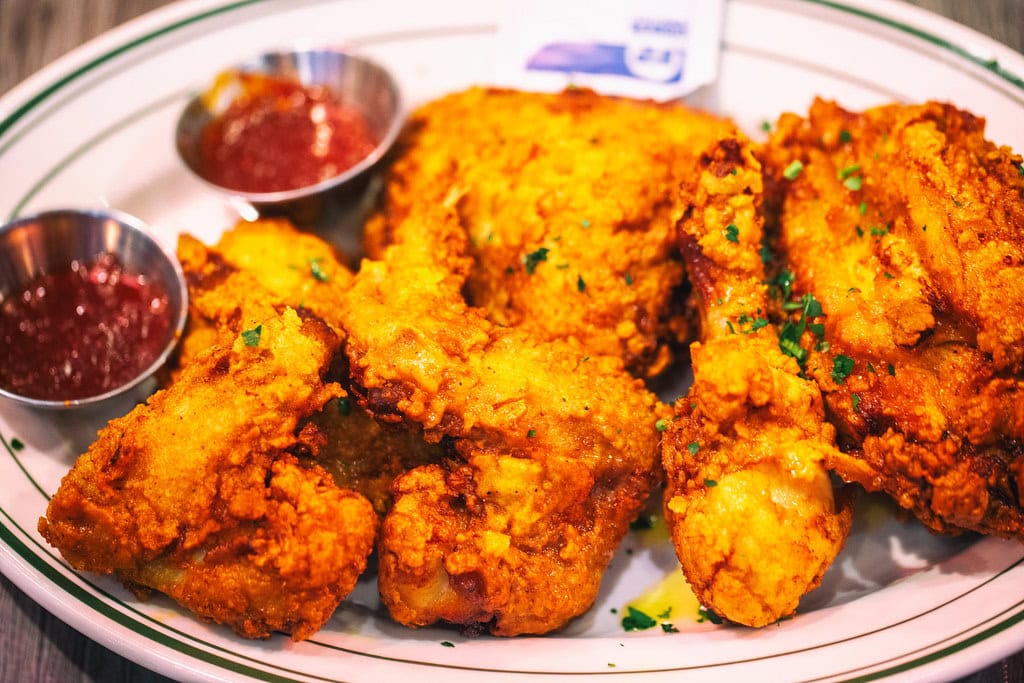Riverfront Retail Starts – The 1980s Pivot to Riverwalk
By the early 1980s, the old wharves along the Mississippi River in New Orleans weren’t pulling their weight.
Container shipping had changed the game—faster, more efficient loading at centralized terminals left older sites like the Poydras Street and Julia Street Wharves underused.
Rather than leave that space idle, city planners cleared both structures to make way for something new.
In 1984, the site became part of the Louisiana World Exposition.
That year’s World’s Fair brought attention, tourism, and temporary infrastructure to a section of the city that had been industrial and closed off.
Although the fair itself didn’t meet revenue expectations, it put the spotlight back on New Orleans’ riverfront and what might come next.
That next step came two years later.
In August 1986, the Rouse Company, a real estate firm known for urban retail projects, opened Riverwalk Marketplace.
The new mall stretched along the waterfront from Canal Street upriver toward the New Orleans Morial Convention Center.
On one side, the Mississippi River. On the other hand, there is a direct connection to the Hilton New Orleans Riverside Hotel.
From the start, Riverwalk Marketplace leaned into a mixed retail strategy.
There were national stores—big names with proven draw—and smaller Louisiana-based businesses.
Visitors could walk along glass-front corridors, shop for mid-range goods, or pause to watch the river traffic outside.
The mall’s location made it easy to attract cruise passengers, business travelers from the convention center, and people searching for things to do in New Orleans, LA.
That development set the stage for everything that followed.
It placed a shopping center on reclaimed shipping property and aligned its floor plan with the edge of the water.
While the mall’s role would shift over time, this initial phase created a retail corridor at the foot of Canal Street—part of a growing trend toward waterfront commercial space in U.S. cities during the late 20th century.
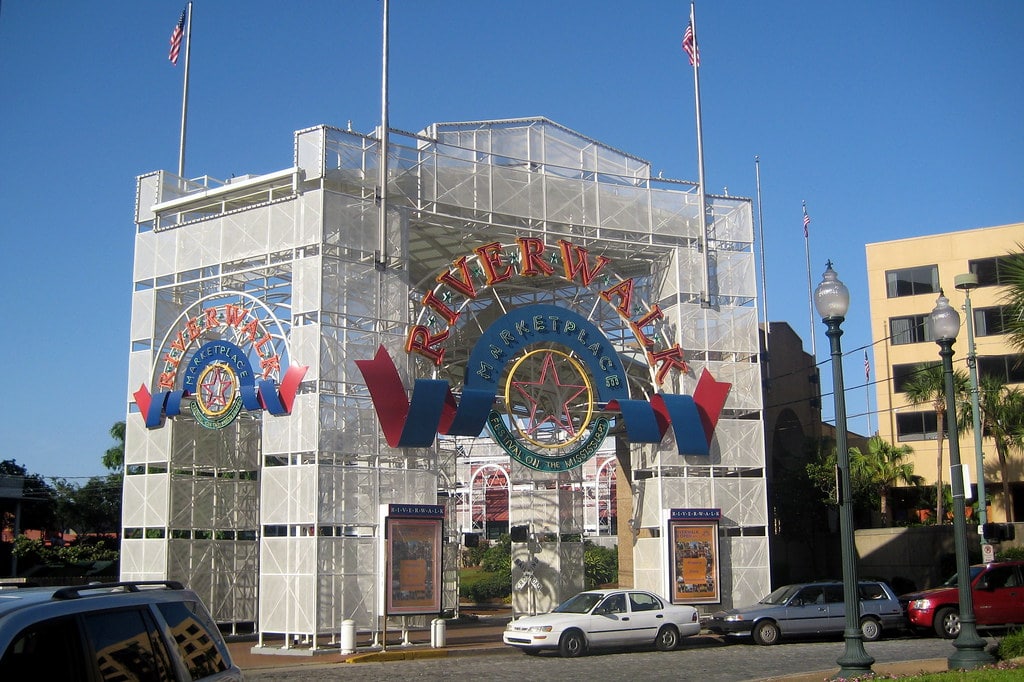
Disruptions and Recovery in the Retail Lease Timeline
The Riverwalk Outlets had been open for just over a decade when it faced a major interruption.
On December 14, 1996, a cargo ship named MV Bright Field lost control and veered off course.
The vessel struck the Riverwalk complex in the early afternoon.
Roughly 66 people were injured, and fifteen retail units sustained structural damage.
Repair estimates for the mall, nearby condos, the Hilton hotel, and infrastructure totaled $15 million.
A bronze plaque now marks the section of the pier where the ship made contact.
The mall continued to operate after repairs, but that wasn’t the last disruption.
In 2005, Hurricane Katrina forced a temporary closure in downtown New Orleans due to wind damage and widespread looting.
The damage varied from cosmetic to structural. Some tenants pulled out entirely, while others waited to see whether foot traffic would return.
By early December 2005, Riverwalk Outlets had reopened, with barely a few shops at first.
Management aimed to catch the holiday rush, but recovery moved slowly.
Retailers didn’t flood back in; instead, the property came back piece by piece.
Local operators were often the first to re-sign leases, while national brands followed later.
By 2009, Riverwalk Outlets was operating at near-full capacity again.
It had taken four years. The return wasn’t automatic. Stores needed to assess risk, insurance coverage, and changes in customer flow downtown.
Riverwalk’s location near the Convention Center helped—it kept some business travelers and cruise tourists circulating through the area.
The 2000s ended with a stabilized mall, but there were signs that the retail model would need an update.
Rents had stayed low post-Katrina to attract tenants, and lease incentives, once temporary, became more common.
Some storefronts rotated frequently, and others went dark during weekdays.
The mall was running, but the old setup wasn’t doing the job anymore.
Real Estate Overhaul – The 2014 Outlet Pivot
In mid-2014, Riverwalk Outlets temporarily closed for renovation.
It wasn’t a simple refresh—it was an $82 million overhaul backed by the Howard Hughes Corporation.
The changes weren’t about decor. The entire model shifted from a mixed-use mall to an outlet center.
That move followed a pattern seen in other cities where aging malls leaned into discount retail to stay viable.
Riverwalk Outlets reopened in May 2014 under a new name: The Outlet Collection at Riverwalk.
It added 50,000 square feet of leasable space and restructured footpaths to improve shopper circulation.
With the relaunch, a series of new tenants opened. Coach, Neiman Marcus Last Call Studio, and Gap Factory were among the anchor outlets brought in.
For retail landlords in 2014, those names carried weight—they were proven draws at reduced price points.
The renovation also changed the exterior and interior finishes, pulling in more natural light and creating better sightlines to the river.
Inside, space was reallocated. Smaller shops gave way to larger-format outlet footprints.
Food vendors were moved and clustered to the southern end, closer to Spanish Plaza.
From a leasing standpoint, the relaunch helped stabilize long-term occupancy.
Most units opened in the first few months after renovation, and others phased in through 2015.
The property also saw a short-term jump in cruise passenger spending due to increased visibility from nearby terminals.
Ownership Turnover and Lease Strategy Under RockStep Capital
Outlet Collection at Riverwalk was hit hard by the global health crisis, given its reliance on tourists from nearby hotels and cruise ships. Also, in 2020, the chain’s Neiman Marcus Last Call store was closed as part of a nationwide store closure program.
In January 2022, The Outlet Collection at Riverwalk changed hands.
Houston-based RockStep Capital acquired the mall for $34 million from Howard Hughes Corporation.
The deal covered the structure itself, not the land beneath, which is still leased from the Port of New Orleans.
That lease structure had been in place since the property’s origin as Riverwalk Marketplace.
RockStep didn’t delay in repositioning the mall. Its portfolio focuses on underperforming retail properties, often in secondary markets.
Riverwalk’s downtown location was an outlier. Still, the company moved to evaluate tenant mix, promotional campaigns, and customer flow.
From a sales strategy standpoint, RockStep emphasized regional tenants and brands that could support outlet pricing.
Larger stores, like Coach, Gap, and Nordstrom Rack, remained in place.
By late 2023, Riverwalk Outlets had stabilized occupancy, though with a few dark windows.
The broader retail environment—especially post-2020 trends—meant even destination properties had to negotiate tenant expectations carefully.
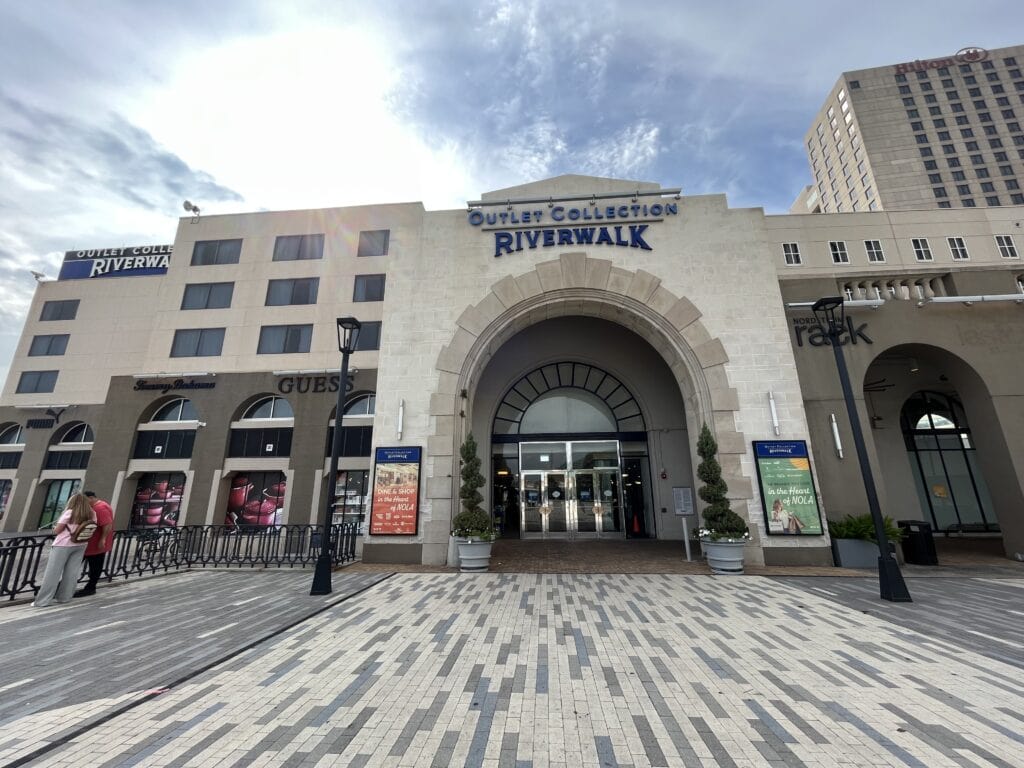
Sales Promotions, Seasonal Traffic, and Event Programming
In the fall of 2024, the Thursdays On The River series returned, bringing weekly live music performances outdoors during the shoulder season.
The setup gave foot traffic a boost and extended average visitor time.
Spring brought outlet sales that aimed to boost weekday foot traffic.
In April 2025, Kate Spade Outlet offered markdowns of up to 70% on select items, with an additional 25% off the promotional stack.
Le Creuset followed with a 25% discount across its product line.
These weren’t isolated offers—storewide markdowns and short-term clearance events were common across tenants.
Retailers adjusted pricing to align with cruise port arrivals and downtown hotel booking patterns.
While weekends and holidays still drove most sales, Riverwalk’s weekday promotions attempted to balance the week.
The rewards program tied in, offering extra discounts and early access to promotional pricing for enrolled members.
Events filled in the calendar where sales alone couldn’t.
The 39th Annual Lundi Gras celebration took place at the Spanish Plaza at the end of the mall in March 2025.
It featured music, pop-up vendors, and event tie-ins with mall retailers.
On March 20, 2025, news broke that Forever 21 would close all of its Louisiana locations, including the storefront at Riverwalk Outlets.
The decision followed its parent company’s Chapter 11 bankruptcy filing. It wasn’t an isolated case.
Analysts projected that nearly 15,000 retail locations across the U.S. would close by the end of the year, nearly twice as many as in 2024.
